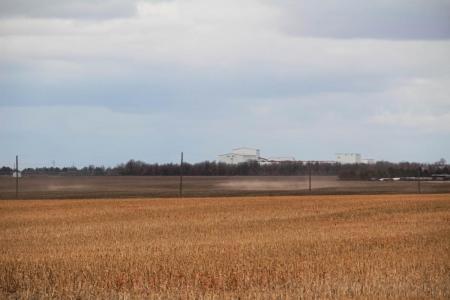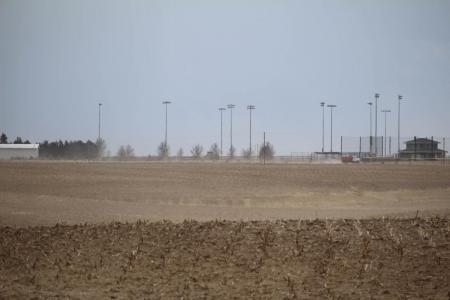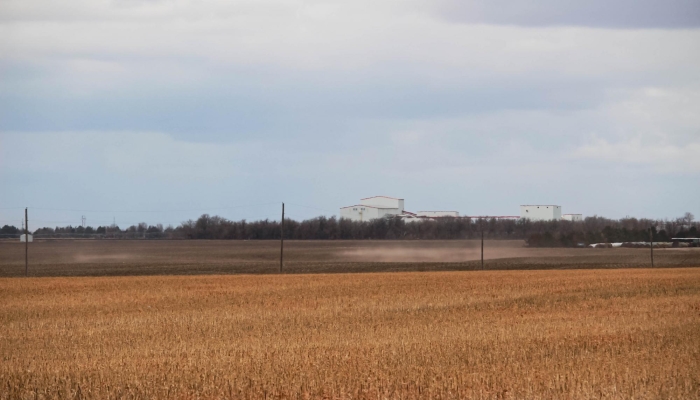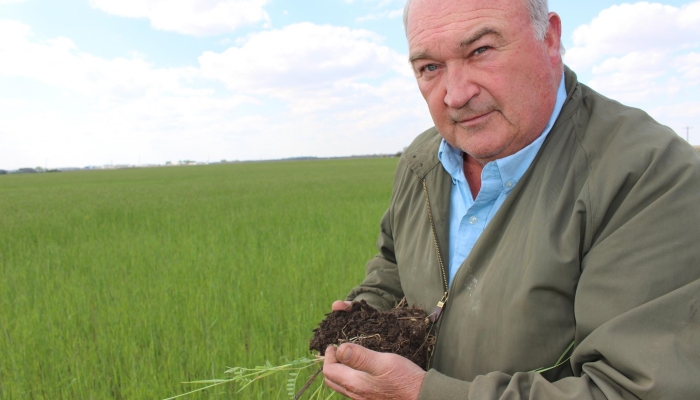Windproof
Cover crops hold soils in place, despite high winds
The wind was gusting up to 65 miles per hour in York County during the first week of April, a week that saw multiple days of high wind warnings across the state. Dan Leininger, water conservationist for the Upper Big Blue Natural Resources District, saw more than an inconvenience in this storm: as he looked across the tilled fields of dark soil that comprise most of the district, he saw the wealth of the state blowing away in the howling gale force. Clouds of rich topsoil, lifted from fields and blasted south and eastward, never to return. The drought conditions across much of Nebraska, combined with sustained high winds, meant that erosion was inevitable on conventionally tilled fields where best management practices such as cover crops and diverse growing rotations are not in use.
According to the Natural Resources Conservation Service, erosion happens when soil is not adequately covered to protect it from water and wind. When uncovered soil particles become detached and are washed or blown away, soil health declines, and other resources are negatively impacted such as water and air quality. The impact on air quality was evident during the recent windstorm, as Leininger noticed the swirling clouds blow off the fields and across roads, creating a possible safety hazard for drivers, as well as making breathing without eating a mouthful of soil a challenge for anyone unfortunate enough to be outside on such a day. Visions of the Dust Bowl era are hard to deny.
|
It is a stark contrast to visit the Project GROW (Growing Rotational crops On Wellfield) demonstration fields on the northeast side of the City of York. Amidst the brown and gold stubble of the previous year’s crop, vibrant green of new rye grass is coming up. The ground cover provided by the small grain crop and the other remnant plant matter on the field means that even in high winds, the soil doesn’t move. Unlike the fields that surround the GROW site, there is no loss of fertility here due to erosion. Beyond simply protecting the soil from being blown away, the cover crops are also providing nutrients into the soil that will be used by the alfalfa crop to be planted after the rye is harvested in July. These fields are getting richer while the neighboring fields are deteriorating in the current weather conditions, notes Leininger.
Project GROW is a collaborative effort between the Upper Big Blue NRD and the City of York to protect the soil over the city’s wellfield through best management practices. The end goal is to safeguard the groundwater beneath the soil that provides drinking water to the 7,800 people who live in York. In addition to preventing erosion, these soil health practices are preventing nitrogen leaching that could contaminate drinking water, which is becoming a major problem for rural Nebraskans.
 |
 |
To Leininger, the benefits of cover crops and other soil health practices have never been more obvious. As severe weather events, including periods of drought followed by intense rainfall, become more the norm through this region, protecting and improving the health of the soil is becoming an urgent issue. Healthy soils absorb and retain moisture like a sponge and won’t blow away in high winds. Conventionally tilled mono-cropped fields that lie naked to the elements for much of the year are doubly prone to erosion, from the wind as well as heavy rainfall.
Leininger recommends producers incorporate the five principles of soil health into their operations to prevent erosion and naturally improve fertility:
- Provide soil armor with cover crops and plant residue.
- Minimize soil disturbance through reduced tillage.
- Increase biodiversity through diverse crop rotations.
- Incorporate livestock to add fertilizer and increase biodiversity.
- Keep a continuous live root growing in the soil through use of cover crops.
The Upper Big Blue NRD and the NRCS have programs available to assist producers in the implementation of soil health practices. It can be challenging to get started with no till and cover crops, Leininger said. That’s why the funding and guidance provided by the NRD and agency partners are available. To take advantage of these programs, contact the NRD and get started today.


